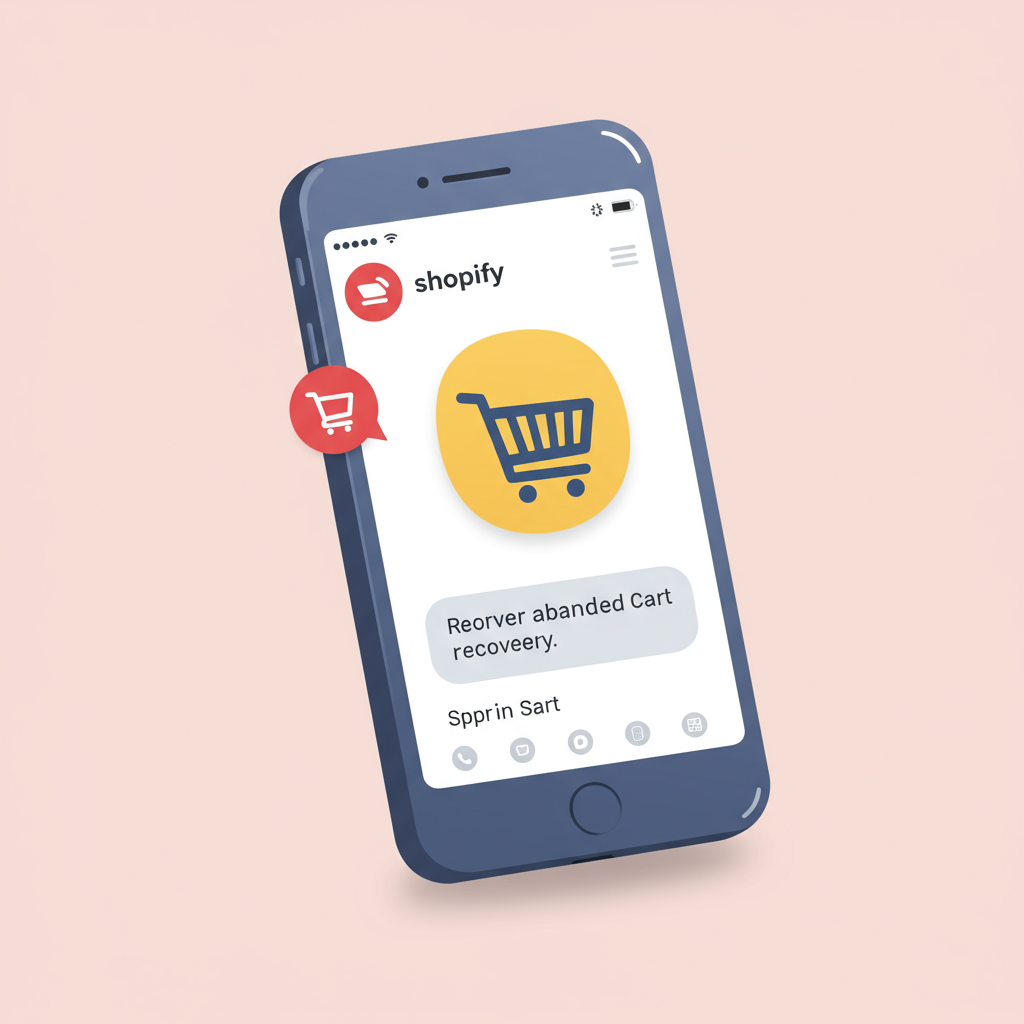Discover how I leverage SMS to recover lost revenue and boost conversions for my Shopify store.
As a Shopify merchant, I know the feeling all too well: a customer adds items to their cart, gets to checkout, and then… nothing. They vanish. This phenomenon, known as cart abandonment, is a significant challenge for every online business.
It’s a frustrating reality, isn’t it? All that effort to attract visitors, guide them to your products, and then they leave right at the finish line.
The average cart abandonment rate hovers around 70%, meaning for every 10 potential sales, 7 are slipping through your fingers. That’s a lot of lost revenue.
For years, email marketing has been the go-to solution for recovering these lost sales. And while email is effective, I’ve discovered an even more immediate and powerful tool: SMS automation.
Today, I want to share my insights and guide you through implementing a robust Shopify abandoned cart SMS automation strategy that can significantly boost your recovery rates.
Why SMS, you ask? Think about it. How often do you check your emails versus how quickly you open a text message?
SMS messages boast incredibly high open rates, often exceeding 90% within minutes of delivery. This immediacy is precisely what you need when trying to re-engage a customer who’s just left your site.
Unlike emails that can get lost in a crowded inbox, an SMS lands directly in the customer’s hand, demanding attention. It’s personal, direct, and incredibly effective.
I’ve found that SMS doesn’t replace email; it complements it beautifully. They work in tandem, creating a multi-channel recovery strategy that covers all bases.
So, how do we set this up on Shopify? The first step is choosing the right SMS marketing app from the Shopify App Store. There are many options, each with its own features and pricing.
Once you’ve selected an app, the integration with your Shopify store is usually straightforward, often just a few clicks. This allows the app to track abandoned carts and customer data.
The crucial next step, and one I cannot stress enough, is collecting phone numbers ethically and legally. You absolutely must obtain explicit consent from your customers to send them marketing SMS messages.
This usually involves a clear opt-in checkbox at checkout or a dedicated sign-up form. Transparency is key here.
Now, let’s talk about crafting those messages. A generic “You left something behind” won’t cut it. Your SMS needs to be concise, compelling, and personalized.
I always include the customer’s name and a direct link back to their specific cart. Personalization makes the message feel less like an automated blast and more like a helpful reminder.
Consider the timing of your messages. My typical flow starts with the first SMS sent within 15-30 minutes of abandonment. This is a gentle, timely reminder.
If they still haven’t completed the purchase, I send a second message around 24 hours later. This one might highlight a benefit of the product or offer a gentle nudge.
For those still on the fence after 48-72 hours, I might introduce an incentive, like a small discount or free shipping. Use incentives strategically, as they can eat into your margins if overused.
Remember the character limit for SMS. Every word counts! Get straight to the point, use clear language, and include a strong call to action (CTA).
Always provide a clear and easy way for customers to opt out of your SMS messages. This is not just good practice; it’s a legal requirement in many regions.
Compliance is paramount. I’ve spent a lot of time ensuring my SMS campaigns adhere to regulations like TCPA in the US, GDPR in Europe, and other local laws. Ignorance is not an excuse, and penalties can be severe.
This means having a clear privacy policy, obtaining explicit consent, and honoring opt-out requests promptly. Always consult legal counsel if you’re unsure.
Once your automation is live, don’t just set it and forget it. I constantly monitor my performance metrics: conversion rates, recovered revenue, and the ROI of my SMS efforts.
A/B testing different message variations, timings, and incentives is crucial for optimizing your strategy. What works for one store might not work for another.
By implementing a well-thought-out abandoned cart SMS automation, I’ve seen a significant increase in recovered sales and overall revenue for my Shopify store. It’s a powerful tool that every merchant should consider.
It’s about reaching your customers where they are, with a timely and relevant message, guiding them back to complete their purchase.
So, if you’re looking to plug those leaks in your sales funnel, I highly recommend diving into Shopify abandoned cart SMS automation. The results can be truly transformative.
What do you think about this article? I’d love to hear your thoughts and experiences with SMS marketing!






